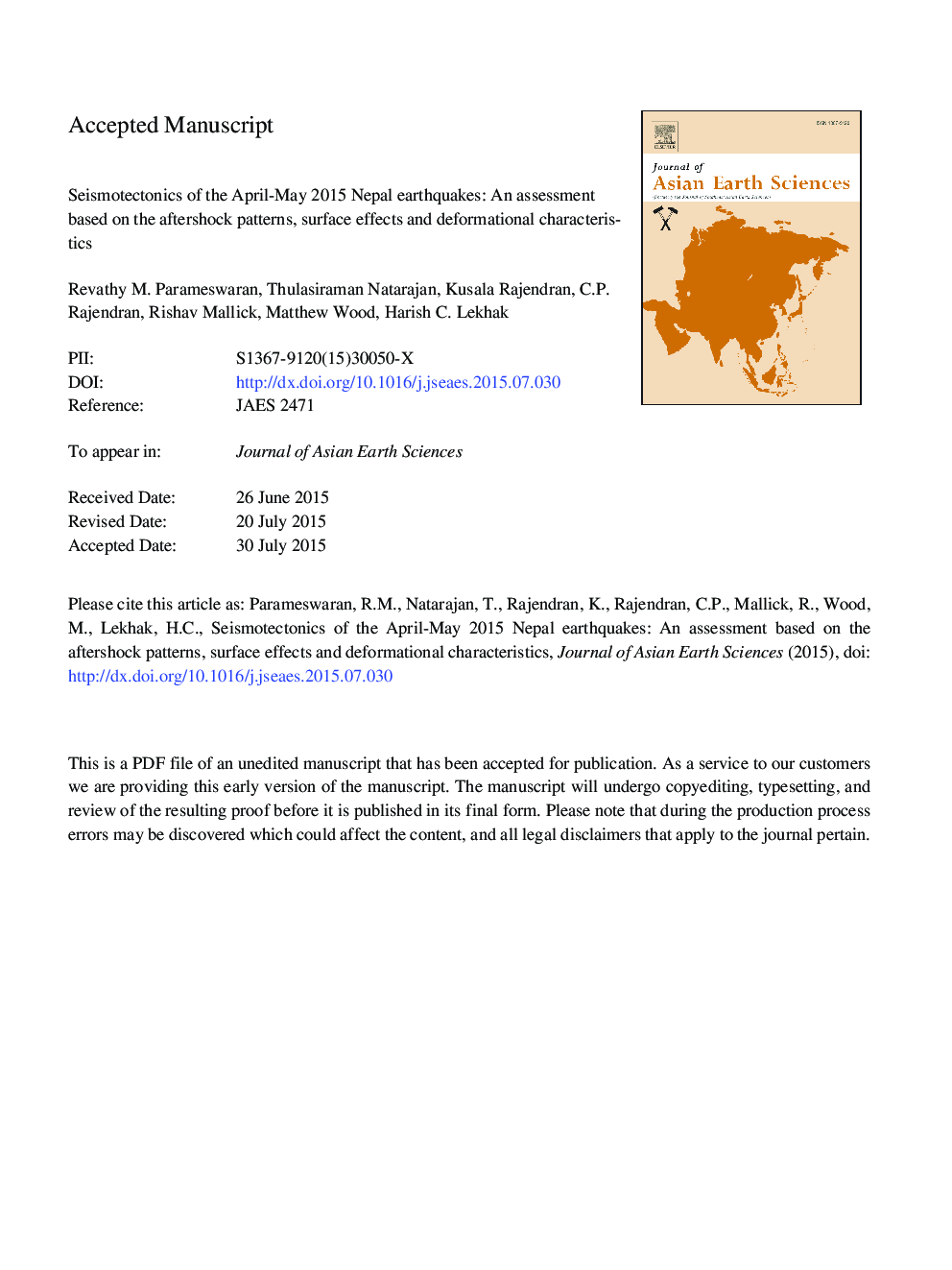| Article ID | Journal | Published Year | Pages | File Type |
|---|---|---|---|---|
| 6444132 | Journal of Asian Earth Sciences | 2015 | 51 Pages |
Abstract
Occurrence of the April 25, 2015 (Mw 7.8) earthquake near Gorkha, central Nepal, and another one that followed on May 12 (Mw 7.3), located â¼140Â km to its east, provides an exceptional opportunity to understand some new facets of Himalayan earthquakes. Here we attempt to assess the seismotectonics of these earthquakes based on the deformational field generated by these events, along with the spatial and temporal characteristics of their aftershocks. When integrated with some of the post-earthquake field observations, including the localization of damage and surface deformation, it became obvious that although the mainshock slip was mostly limited to the Main Himalayan Thrust (MHT), the rupture did not propagate to the Main Frontal Thrust (MFT). Field evidence, supported by the available InSAR imagery of the deformation field, suggests that a component of slip could have emerged through a previously identified out-of-sequence thrust/active thrust in the region that parallels the Main Central Thrust (MCT), known in the literature as a co-linear physiographic transitional zone called PT2. Termination of the first rupture, triggering of the second large earthquake, and distribution of aftershocks are also spatially constrained by the eastern extremity of PT2. Mechanism of the 2015 sequence demonstrates that the out-of-sequence thrusts may accommodate part of the slip, an aspect that needs to be considered in the current understanding of the mechanism of earthquakes originating on the MHT.
Related Topics
Physical Sciences and Engineering
Earth and Planetary Sciences
Geology
Authors
Revathy M. Parameswaran, Thulasiraman Natarajan, Kusala Rajendran, C.P. Rajendran, Rishav Mallick, Matthew Wood, Harish C. Lekhak,
